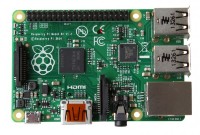wlanboy
Content Contributer
They upgraded the Raspberry Pi Model B - called it B+.
Same price tag with some neat features:

Nice looking one.
They keep the old B model for fans but if you want to buy a Raspberry Pi - take the B+ one.
Same price tag with some neat features:
- They upgraded the GPIO header from 26 pins to 40 pins
- They doubled the USB 2.0 ports to 4.
- They changed the SD card adapter to Micro SD
- They replaced the linear regulators with switching ones to reduce the power consumption about 1W.
- They added a dedicated low-noise power supply for the audio circuit

Nice looking one.
They keep the old B model for fans but if you want to buy a Raspberry Pi - take the B+ one.
